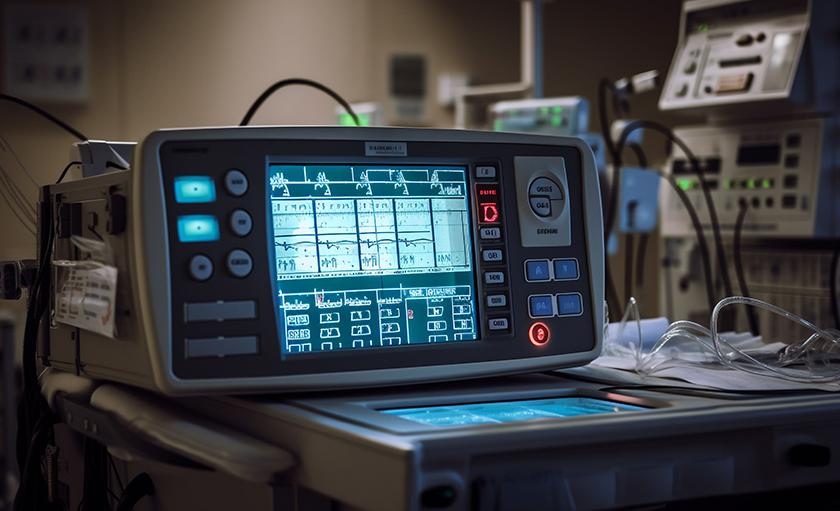
- 20 Mar 2025
-
 Medwe admin
Medwe admin
The Future of Medical Equipment: Innovations to Watch in 2025
Medical technology is advancing faster than ever before. In 2025, we’re not just talking about smaller devices or better batteries — we’re witnessing a fundamental shift in how healthcare is delivered, monitored, and personalized. The future of medical equipment is data-driven, AI-enhanced, and more patient-centered than ever.
Here are some of the top innovations in medical equipment to watch in 2025.
1. AI-Powered Diagnostic Devices
Artificial Intelligence is no longer a futuristic concept — it’s now being embedded into diagnostic equipment to help detect conditions earlier and with greater accuracy. In 2025, expect to see:
-
AI in imaging: Tools like AI-assisted MRIs and CT scans that flag abnormalities in real time.
-
Smart stethoscopes: Devices that analyze heart and lung sounds using machine learning.
-
Dermatology scanners: Portable tools that assess skin lesions and provide instant risk ratings for melanoma.
These technologies are not replacing doctors — they’re acting as high-speed, high-accuracy assistants.
2. Wearable and Implantable Monitoring Devices
Continuous health monitoring is moving from hospitals into homes, wrists, and even under the skin. In 2025, we’re seeing a boom in:
-
Smart patches that monitor vitals, hydration, and even drug levels.
-
Implantable biosensors for real-time glucose, heart rhythm, or electrolyte tracking.
-
Next-gen wearables with hospital-grade accuracy for at-home recovery and chronic disease management.
These tools support proactive care, early intervention, and reduced hospital admissions.
3. 3D Printing of Medical Devices and Implants
The customization of medical equipment has reached a new frontier with 3D printing. In 2025, this technology is being used for:
-
Patient-specific implants such as orthopedic joints, dental crowns, and spinal cages.
-
Bioprinting tissues like skin grafts and cartilage.
-
On-demand surgical tools for use in remote or emergency settings.
3D printing not only reduces production time and costs but also improves patient outcomes through personalization.
4. Robotic Surgical Systems — Smaller, Smarter, and More Accessible
Robotic-assisted surgery is becoming more compact and widely available. New systems in 2025 feature:
-
Smaller footprints, making them suitable for outpatient and rural facilities.
-
Tactile feedback and AI guidance, enhancing precision and safety.
-
Remote operation capabilities, enabling specialist surgeons to assist in procedures worldwide.
This evolution is democratizing access to minimally invasive surgeries.
5. Portable Imaging and Diagnostics
The portability revolution continues with powerful tools that fit in a backpack — or even a pocket:
-
Handheld ultrasound devices that connect to smartphones.
-
Point-of-care lab analyzers providing blood test results in minutes.
-
Mobile X-ray and ECG units designed for disaster zones, ambulances, and remote clinics.
In 2025, portability means care can go where it’s needed most — fast.
6. Telemedicine-Integrated Equipment
The rise of virtual care demands devices that connect patients and providers seamlessly:
-
Home-use otoscopes, spirometers, and ECGs linked to telehealth platforms.
-
Smart vitals kits that transmit data to clinicians in real time.
-
AI chatbots embedded into home monitors for patient education and triage.
Medical equipment is no longer just for diagnosis — it’s becoming a communication bridge.
7. Sustainable and Eco-Friendly Designs
Sustainability is now a design priority. New medical equipment is being developed with:
-
Recyclable or biodegradable materials
-
Energy-efficient operation
-
Modular components to reduce waste and extend lifespan
As climate-conscious healthcare grows, the demand for green medical tech is rising.
Final Thoughts
In 2025, the future of medical equipment is smarter, smaller, more personalized — and more connected than ever. These innovations aren’t just reshaping clinical environments; they’re transforming the patient experience and redefining what’s possible in modern medicine.
Whether you're a healthcare provider, hospital administrator, or tech investor, keeping up with these trends isn’t optional — it’s essential.

